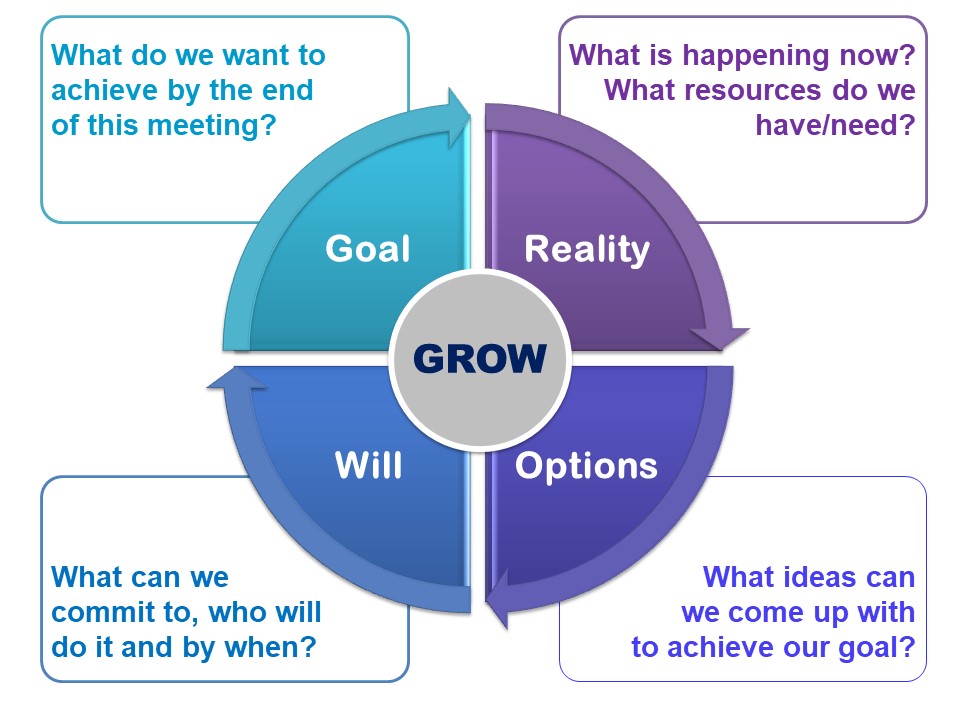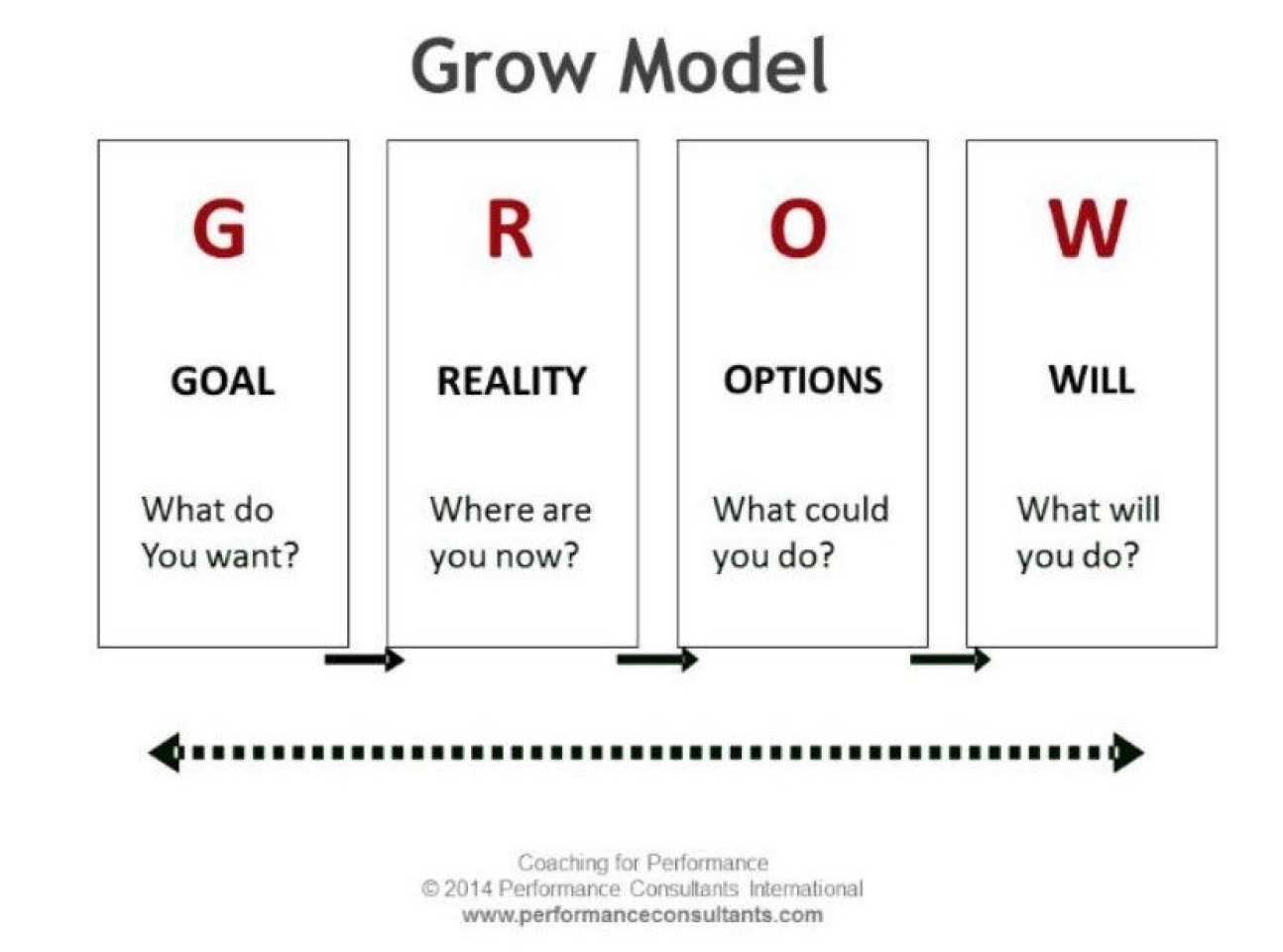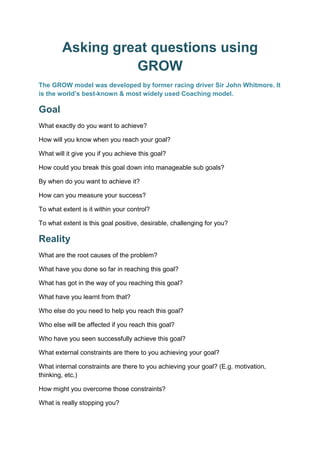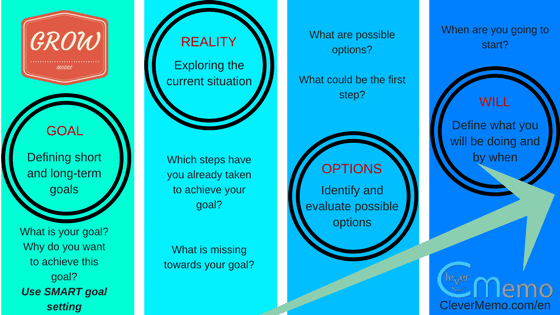The GROW coaching model is a powerful framework designed to facilitate effective coaching conversations and help individuals achieve their goals. Whether you’re a coach, manager, or someone seeking personal development, understanding the GROW model can significantly enhance your approach. In this comprehensive guide, we’ll delve into the GROW model, explore essential questions to ask at each stage, and provide tips, comparisons, and insights that will help you become a more effective coach.
Understanding the GROW Coaching Model
The GROW model is an acronym that stands for Goal, Reality, Options, and Will. Developed in the 1980s by Sir John Whitmore, it provides a structured approach to coaching that can be applied in various settings, from corporate environments to personal development.
What Does GROW Stand For?
- G – Goal: Establishing the objective that the coachee wants to achieve.
- R – Reality: Understanding the current situation and the context of the goal.
- O – Options: Exploring the different strategies and paths available to reach the goal.
- W – Will: Determining the commitment and actions needed to achieve the goal.
Exploring GROW Coaching Model Questions

1. Goal Questions
Goal questions are crucial for clarifying what the coachee wants to achieve. When formulating these questions, aim for specificity and clarity.
Examples of Goal Questions
- What specific goal do you want to achieve?
- How will you know when you have reached this goal?
- What is the timeframe for achieving your goal?
- Why is this goal important to you?
- How does this goal align with your values and vision?

2. Reality Questions
These questions help the coachee understand their current situation related to the goal. It’s about assessing the present and identifying any obstacles.
Examples of Reality Questions
- What is your current situation regarding this goal?
- What challenges are you currently facing?
- What resources do you have available?
- Who else is involved in this situation, and what roles do they play?
- What have you tried so far, and what were the outcomes?

3. Options Questions
When exploring options, the goal is to brainstorm different possible ways to achieve the goal. Encourage creative thinking and open dialogue.
Examples of Options Questions
- What are the different ways you could achieve your goal?
- What options have you considered before?
- What would you do if you weren’t afraid of failure?
- Who could help you in this situation?
- What resources or skills do you need to develop?

4. Will Questions
The will phase is about commitment and action planning. These questions help the coachee solidify their commitment to taking action toward their goal.
Examples of Will Questions
- What will you do first to achieve your goal?
- How committed are you to taking this action?
- When will you start, and how will you stay accountable?
- What obstacles might you encounter, and how will you overcome them?
- How will you measure your progress?

Effective Application of the GROW Model
Tips for Using the GROW Model
.png?width\u003d740\u0026height\u003d465\u0026name\u003dThe%20GROW%20Coaching%20Model%20(1).png)
- Listen Actively: Ensure that you are actively listening to your coachee’s responses to tailor your questions appropriately.
- Create a Safe Space: Foster an environment where your coachee feels comfortable sharing their thoughts and feelings.
- Be Patient: Give time for the coachee to reflect and respond; coaching is a process.
- Follow Up: After the session, follow up on the coachee’s progress and provide support as needed.
Pros and Cons of the GROW Model

| Pros | Cons |
|---|---|
| Provides a clear structure for coaching sessions. | May oversimplify complex situations. |
| Encourages self-reflection and accountability. | Requires skillful facilitation to be effective. |
| Applicable in various contexts (business, personal growth). | Can lead to frustration if goals are unrealistic. |
| Helps identify and overcome obstacles systematically. | Time-consuming for in-depth issues. |
Comparative Analysis of GROW with Other Coaching Models
While the GROW model is popular, several other coaching models offer different frameworks. Here’s a comparison of GROW with two other models: the CLEAR model and the OSCAR model.

| Coaching Model | Description | Strengths | Weaknesses |
|---|---|---|---|
| GROW | A structured approach focusing on Goals, Reality, Options, and Will. | Clear structure, promotes accountability. | May be too simplistic for complex issues. |
| CLEAR | A model focusing on Contracting, Listening, Exploring, Action, and Review. | Emphasizes the importance of listening and review. | Can be time-intensive due to multiple phases. |
| OSCAR | Emphasizes Outcome, Situation, Choices, Actions, and Review. | Focuses on outcomes and choices, encouraging flexible thinking. | May require more coaching skill to navigate effectively. |
Case Studies: Success Stories Using GROW
To illustrate the effectiveness of the GROW model, let’s look at a few real-world examples.

1. Business Coaching
A marketing manager at a tech startup used the GROW model to clarify their goal of increasing customer engagement. Through a series of discussions guided by the GROW model, they pinpointed their target customer segments, explored innovative marketing strategies, and set a clear timeline for implementation, which ultimately led to a 30% increase in customer interaction.
2. Personal Development
A client aiming to improve their work-life balance utilized the GROW model to identify their values, assess their current time management practices, explore various options for delegating tasks, and commit to actionable steps that included setting boundaries and scheduling downtime, resulting in reduced stress levels and enhanced productivity.
Frequently Asked Questions (FAQs)
What Is the Difference Between GROW and Other Coaching Models?
The GROW model is linear and goal-oriented, focusing on a clear progression from setting goals to achieving them. In contrast, models like CLEAR and OSCAR incorporate more exploratory elements, emphasizing understanding and reflection.
How Long Should a GROW Coaching Session Last?
While each session can vary, a typical GROW coaching session lasts between 30 to 60 minutes, allowing enough time for exploration of each phase without feeling rushed.
Can the GROW Model Be Used in Groups?
Absolutely! The GROW model can be effectively used in group coaching settings, facilitating discussions around shared goals and collective challenges.
Are There Digital Tools to Implement the GROW Model?
Yes, various tools and apps can assist in implementing the GROW model. Tools like CoachAccountable and CoachLog can help track sessions and set actionable goals.
Conclusion
Mastering the GROW coaching model can transform the way you approach coaching, whether in a personal, professional, or organizational context. By utilizing structured questions and engaging effectively with coachees, you can empower individuals to achieve their goals and enhance overall growth. Remember, the key lies in fostering open communication and maintaining a supportive coaching relationship.
For further reading on coaching and development frameworks, check out The International Coaching Federation and research papers on ResearchGate.